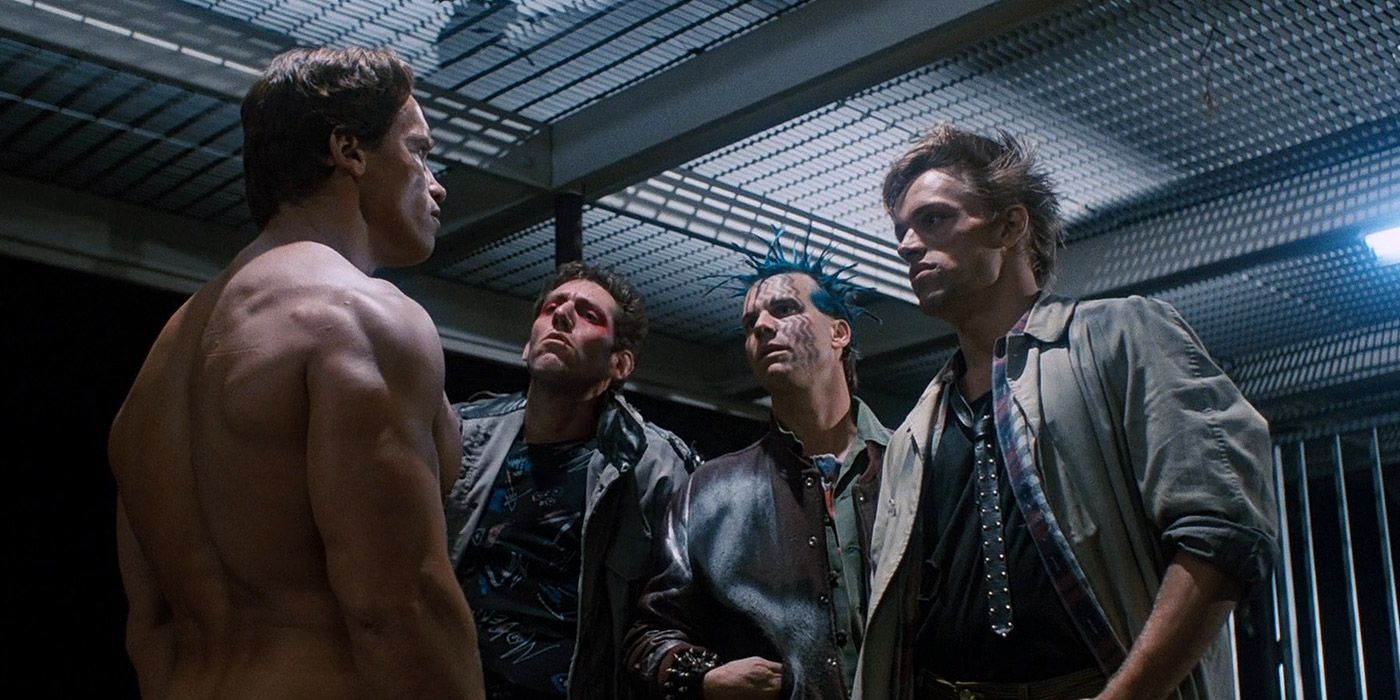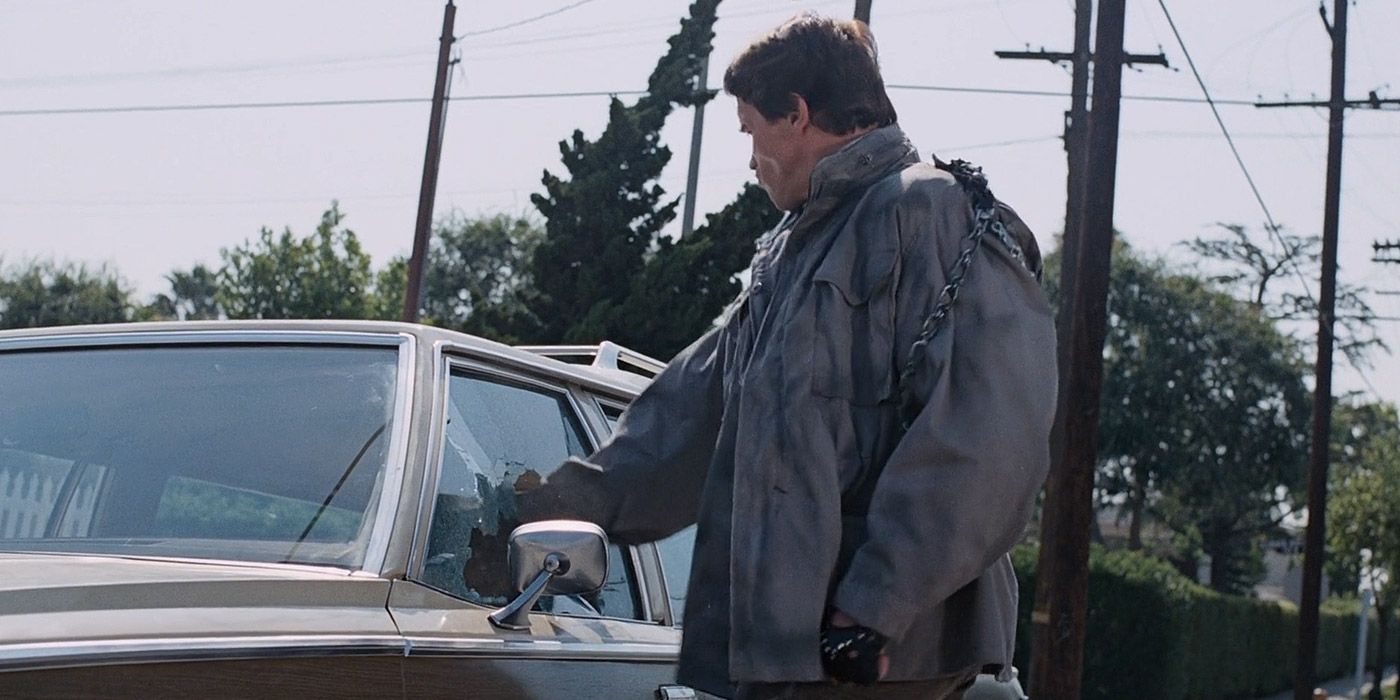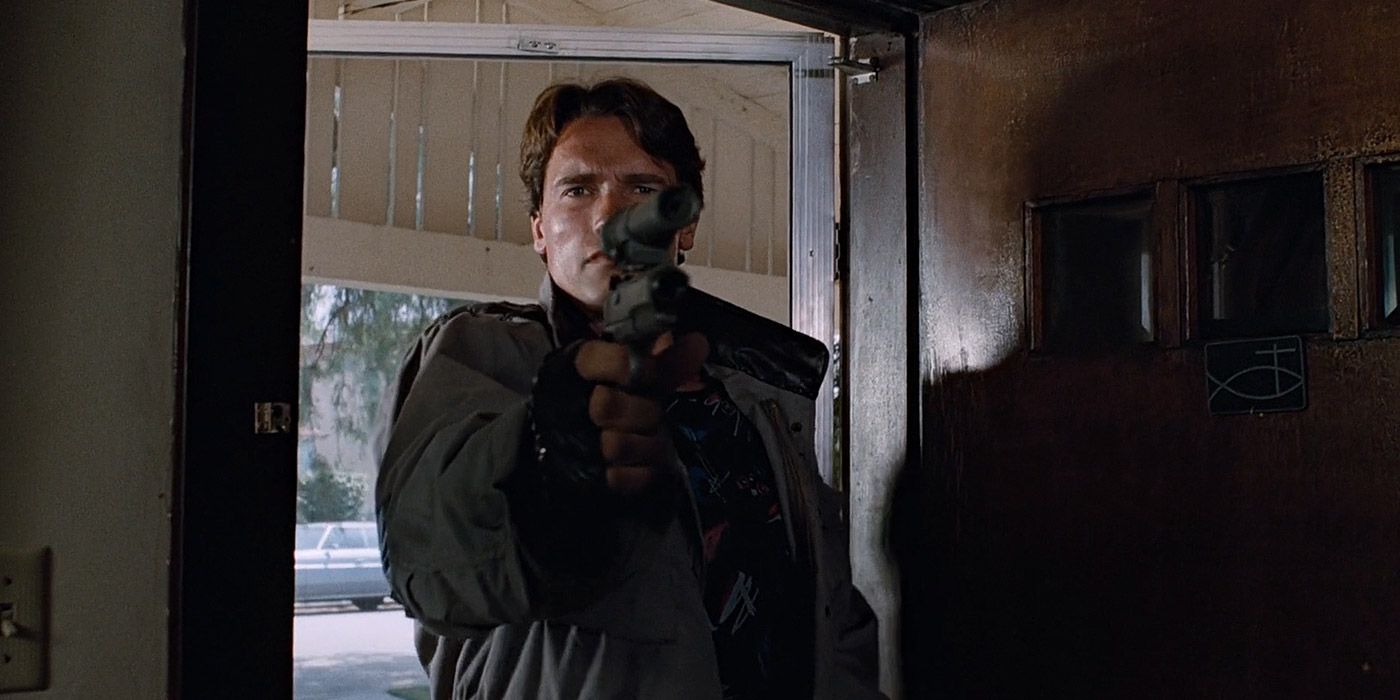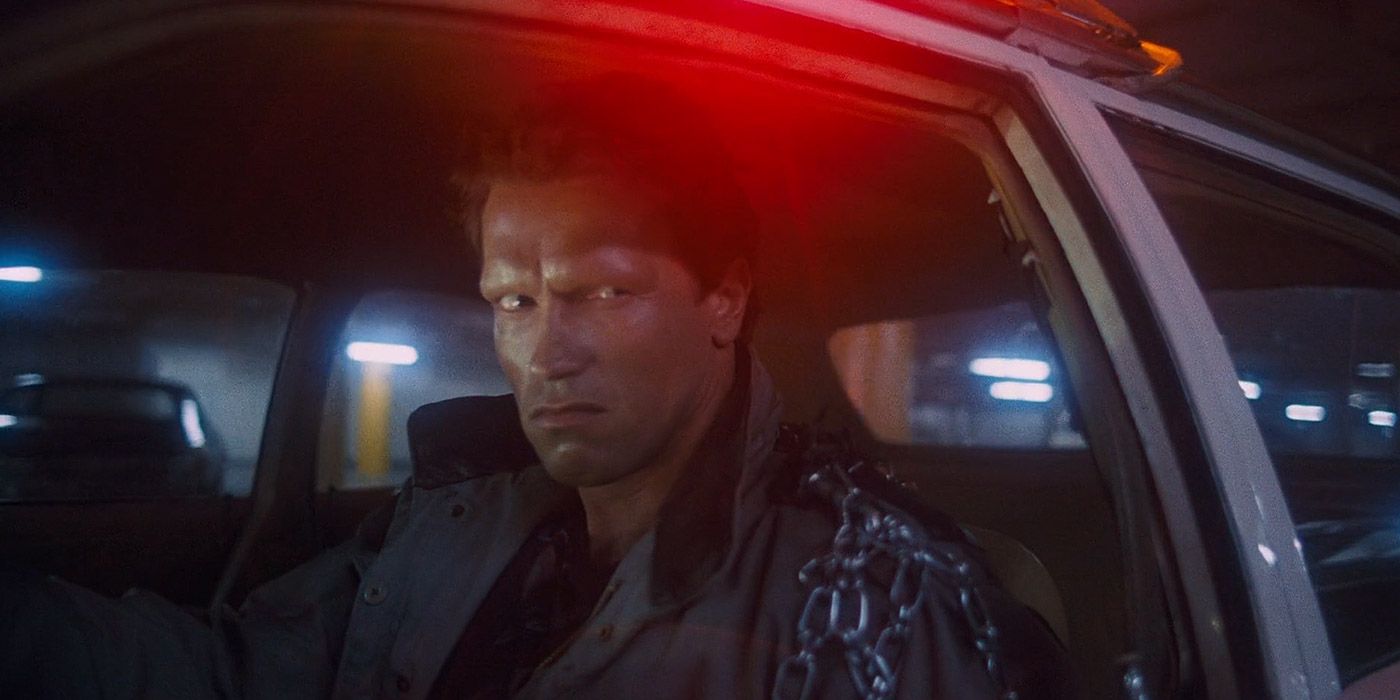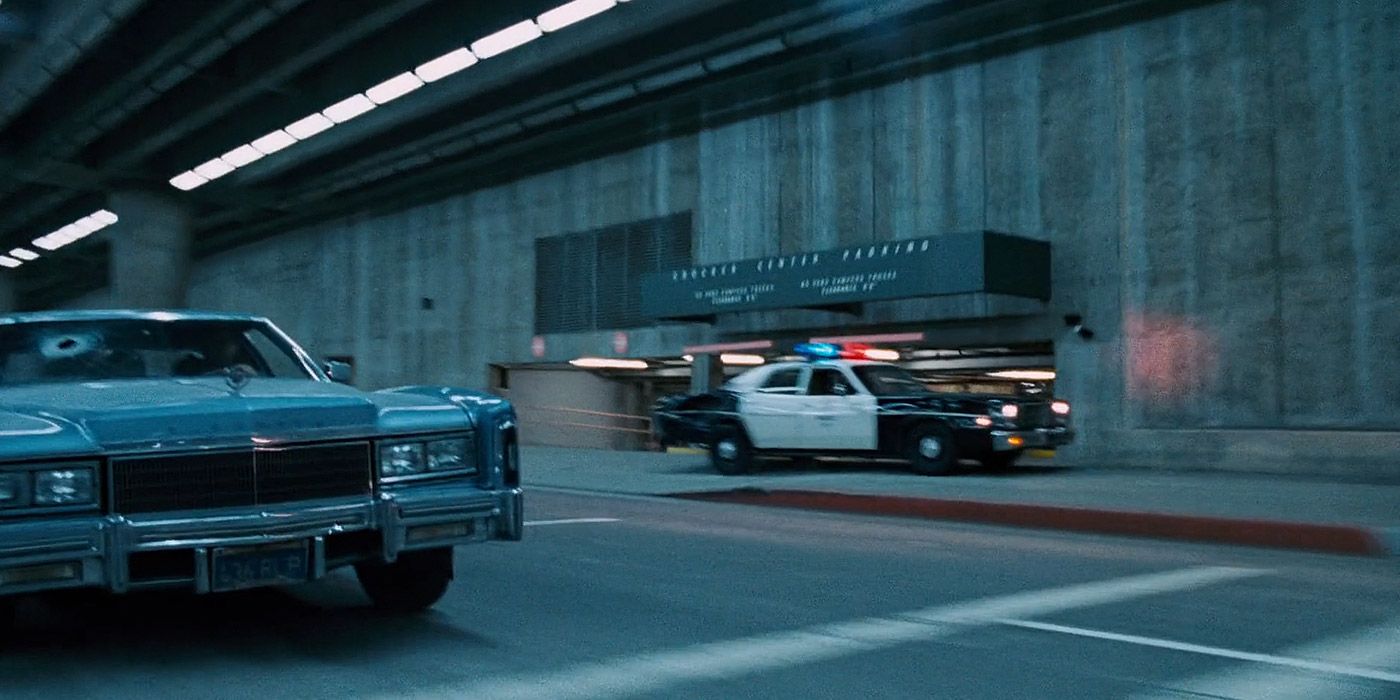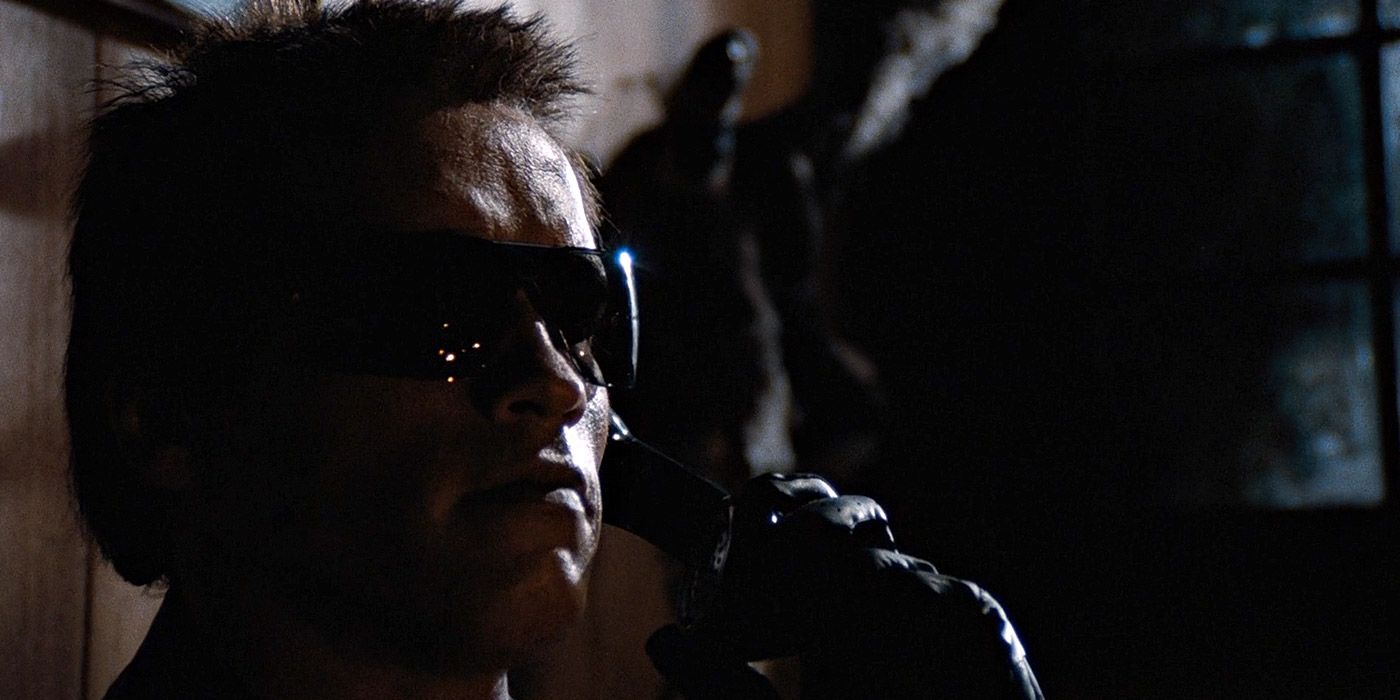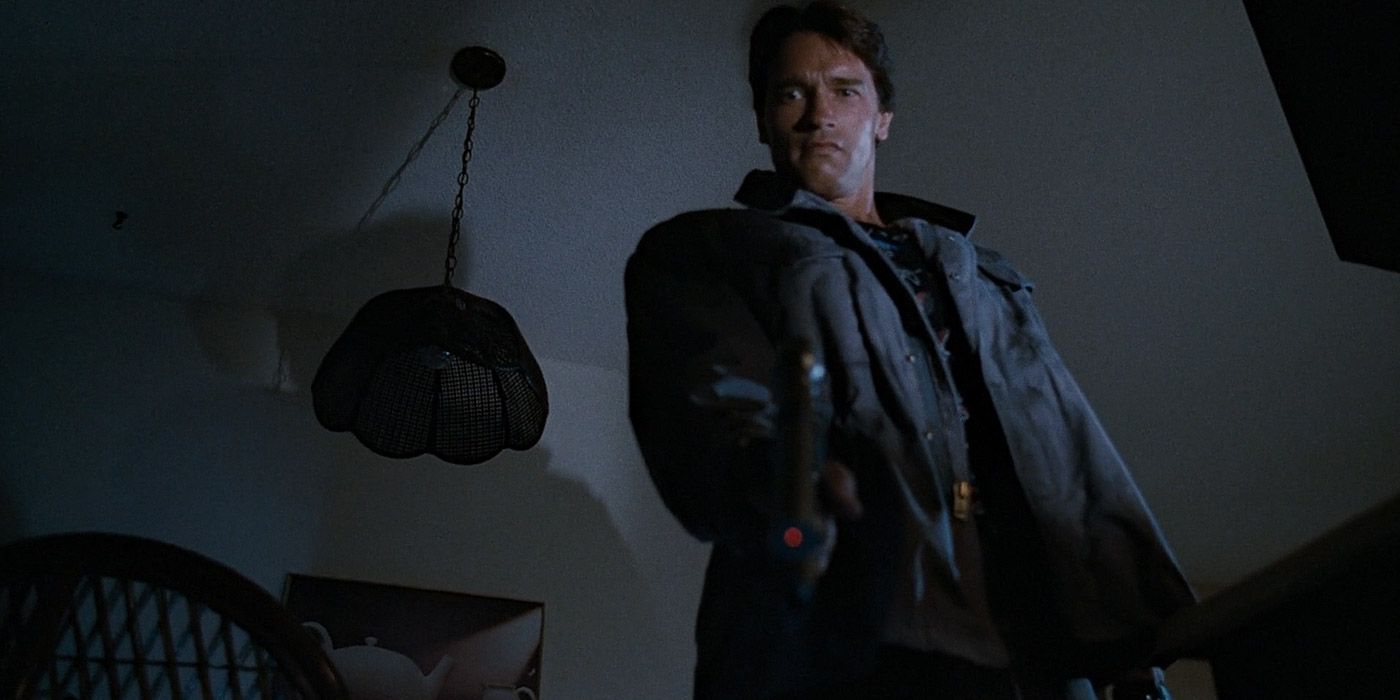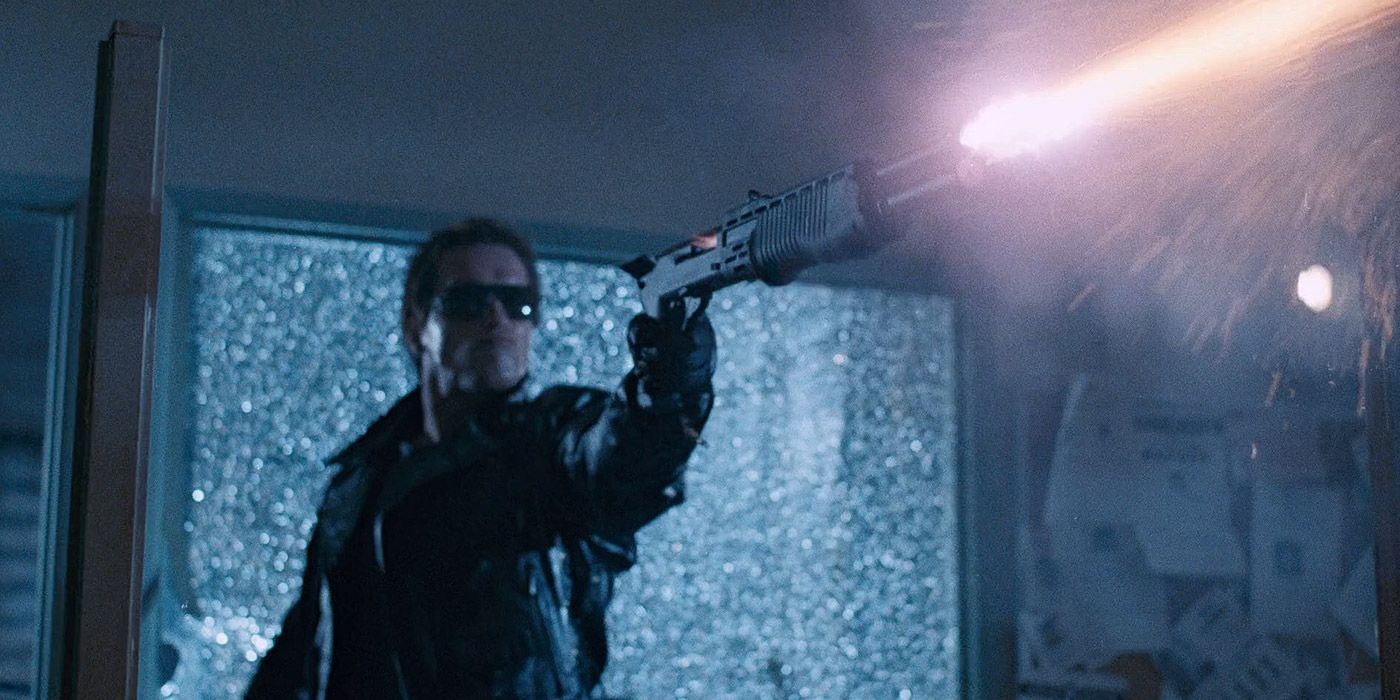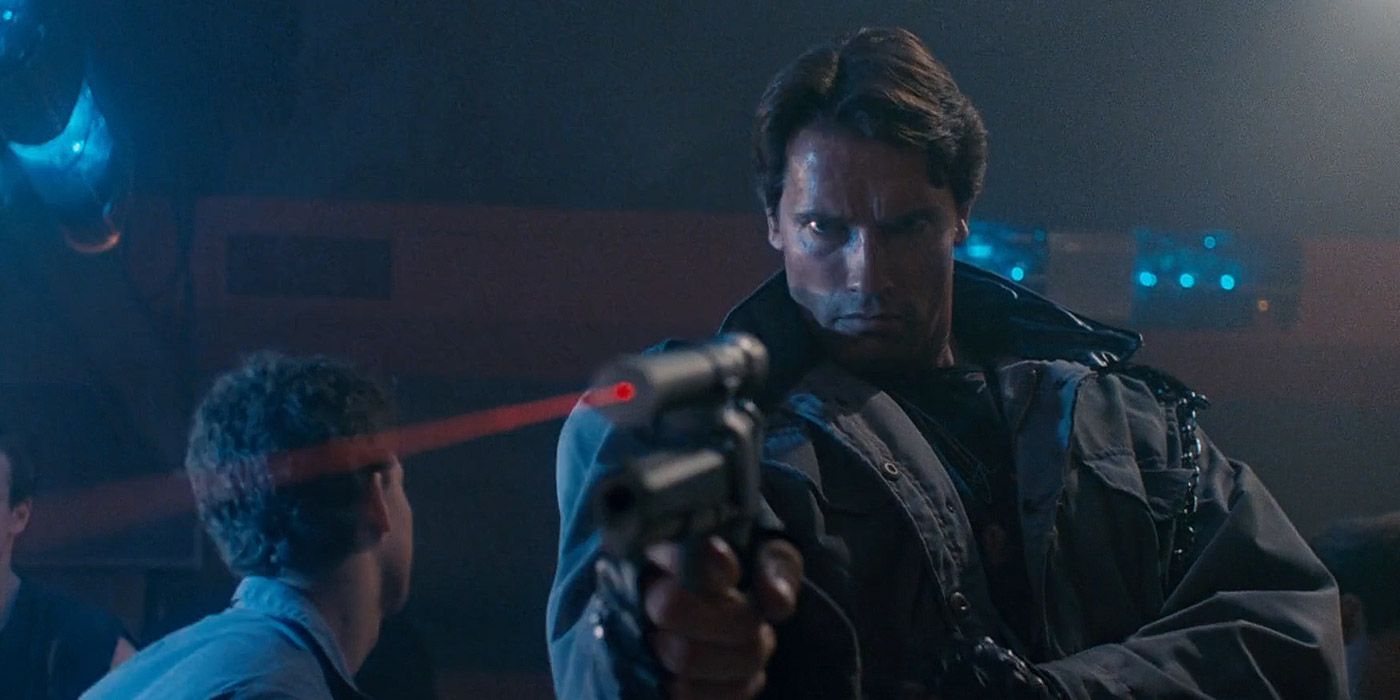The Terminator was built for one thing, and only thing only. SkyNET's lethal T-800 infiltrator unit could blend into any surrounding, track a target, and kill it with lethal precision. When the first Terminator was dispatched to Los Angeles in 1984 to kill Sarah Connor in the iconic first Terminator film, it left a trail of mayhem in its wake.
In a real-world scenario, a court judge would sentence the Terminator to jail for the plethora of crimes the villain commits in its quest to kill Sarah Connor. The crimes committed by this cold-hearted cyborg were so egregious, from public nudity to multiple instances of murder, that it would be difficult to come up with an appropriate sentence.
Indecent Exposure
The Terminator would certainly have a lot of explaining to do if it got caught running around in its birthday suit, which occurs at the beginning of the film when the cyborg travels back in time and appears nude in a Los Angeles alley. While initially isolated, he quickly encounters numerous people, who express varying degrees of shock, envy, and contempt for the cyborg's nude physique.
California Penal Code 314 prohibits anyone from strutting about callously in the buff and displaying their genitals in an open fashion. According to the law, the punishment is surprisingly strict for such a non-violent act. Though the crime itself is a misdemeanor with a mere 6 months in the county jail, it would require the guilty party to register as a sex offender for at least 10 years. This would cause devastating consequences for the life of the accused, though it's doubtful the Terminator would care very much.
Robbery
The Terminator seems to have enough sense to put some clothes on when it first arrives in Los Angeles, but it's fairly aggressive about it. It identifies a group of punks misbehaving late at night, and demands they give it their clothes. When they refuse, the cyborg gets into a fight with them, killing at least one in brutal fashion.
It isn't known if the final punk got away with his life, but one thing is for certain - the Terminator would face some serious charges. Penal Code 211 of the California statute defines second-degree robbery as any kind that does not take place on a mode of transportation or within an inhabited structure. That equals a prison sentence of up to 5 years, plus a felony record. As the Terminator doesn't age due to its cybernetic nature, it could simply sit in jail and wait until it's released on parole before finishing the job it was tasked to perform: kill Sarah Connor.
Grand Theft Auto
Long before the Grand Theft Auto video game series was a popular phenomenon, movie villains were hotwiring and stealing automobiles to set up some of the best car chases in action movies. The Terminator steals one at the beginning of the film in order to travel around Los Angeles and execute his victims as quickly as possible.
Under Penal Code 487, Grand Theft Auto involves the simple act of busting into someone else's car and stealing it. Depending on the case facts and the personal history of the accused, penalties can include up to 3 years in jail, and a $10,000 fine. For the Terminator, since it's already committed a couple of crimes at this point, it's safe to assume it would get the maximum sentence allowed for this crime.
Home Invasion
The Terminator gets right down to business when it arrives in L.A., and starts tracking down anyone by the name of Sarah Connor. Its first victim is an innocent woman who answers the door on a sunny afternoon, only for the Terminator to bust through her front door and shoot her dead.
Penal Code 459 describes this as a textbook home invasion. At no time was the Terminator given any permission to enter the house, yet it broke in anyways, threatened the victim with violence, and followed through. A murder charge would obviously get tacked on as well.
Driving Without A License
Obviously, a time-traveling cyborg from the future wouldn't have any need for a driver's license, but the law would think otherwise. According to Vehicle Code 12500, it is a crime to drive without a license, which is fairly easy to understand. What most don't know is that the law is actually considered a "wobbler law," which means it could carry either a misdemeanor charge or a non-criminal infraction. Though first offenses are considered minor infractions, it's doubtful that mercy would be bestowed upon the Terminator in a court of law.
Reckless Driving
Though the act of barreling down the street and firing guns at people would constitute reckless endangerment, no such law actually exists in California. However, that doesn't mean the guilty party can't be slapped with ancillary charges, particularly reckless driving.
Vehicle code 23103 of California law dictates reckless driving as the act of operating a motor vehicle with complete disregard for the safety of others. Though it's technically a misdemeanor punishable by 90 days in jail, and a pitiful fine, the added charge of firing guns with the intent to kill would probably shift the dynamics of the case quite a lot. Reckless driving is a staple of the Terminator franchise, with some of its best action scenes involving fast cars speeding through populated areas.
False Impersonation
When the T-800 runs out of options for tracking down Sarah, the scene is set for one of the most nonsensical plot arcs of the entire Terminator film. It switches tactics by hunting down her mother, killing her, and then assuming her identity in order to convince her to give up her location. Technically, this falls under Penal Code 529, which deals with false impersonation.
Though no actual identification, records or names had been used for the purpose of a crime, the Terminator's vocal impersonation of Sarah's mother might carry the same penalty. It would be a matter of extenuating circumstances, but the charge would no doubt stick.
First Degree Murder
Given the nature of the Terminator's existence, it's not surprising that murder is a crime that it would commit without a second thought. This particular cyborg would face a number of first-degree murder charges, as defined by law. In each instance, the act was premeditated and carefully planned, with the intent to kill.
The fact that the Terminator racked up such a huge body count in such a short space of time fits the pattern of a serial killer, though of a much different kind. This machine was only doing what it was designed to do, but it's still cold-blooded callous murder.
Third Degree Murder
Third-degree murder is also known as "depraved heart murder," which is the act of killing an unintended target(s) while trying to kill someone else. The Terminator is guilty of seventeen instances of this crime, and that's only counting the incredible shootout at the police station, which ranks as one of James Cameron's best.
Traditional third-degree murder is not actually on the books in California, so the charge would inevitably fall into the second-degree murder category under Penal Code 187. Since the Terminator had no intention of killing anyone who didn't stand in its way, due to its programming, this seems the most plausible theory.
Carrying A Concealed Weapon
The Terminator wastes little time arming itself to the teeth with enough weaponry to take on a small army. Its objective is to slay Sarah Connor, regardless of who gets in the way. To that effect, it robs a gun store and kills the owner, then runs off with a vast array of high-powered weaponry.
Walking around with a concealed weapon is a big no-no in California, according to Penal Code 25400. It is a crime to carry a concealed weapon either on a person or within a vehicle, as dictated to by the Ninth Circuit Court of Appeals. For the Terminator, with multiple counts of murder, theft, and armored robbery, among many other crimes it has committed, this charge is relatively minor.



